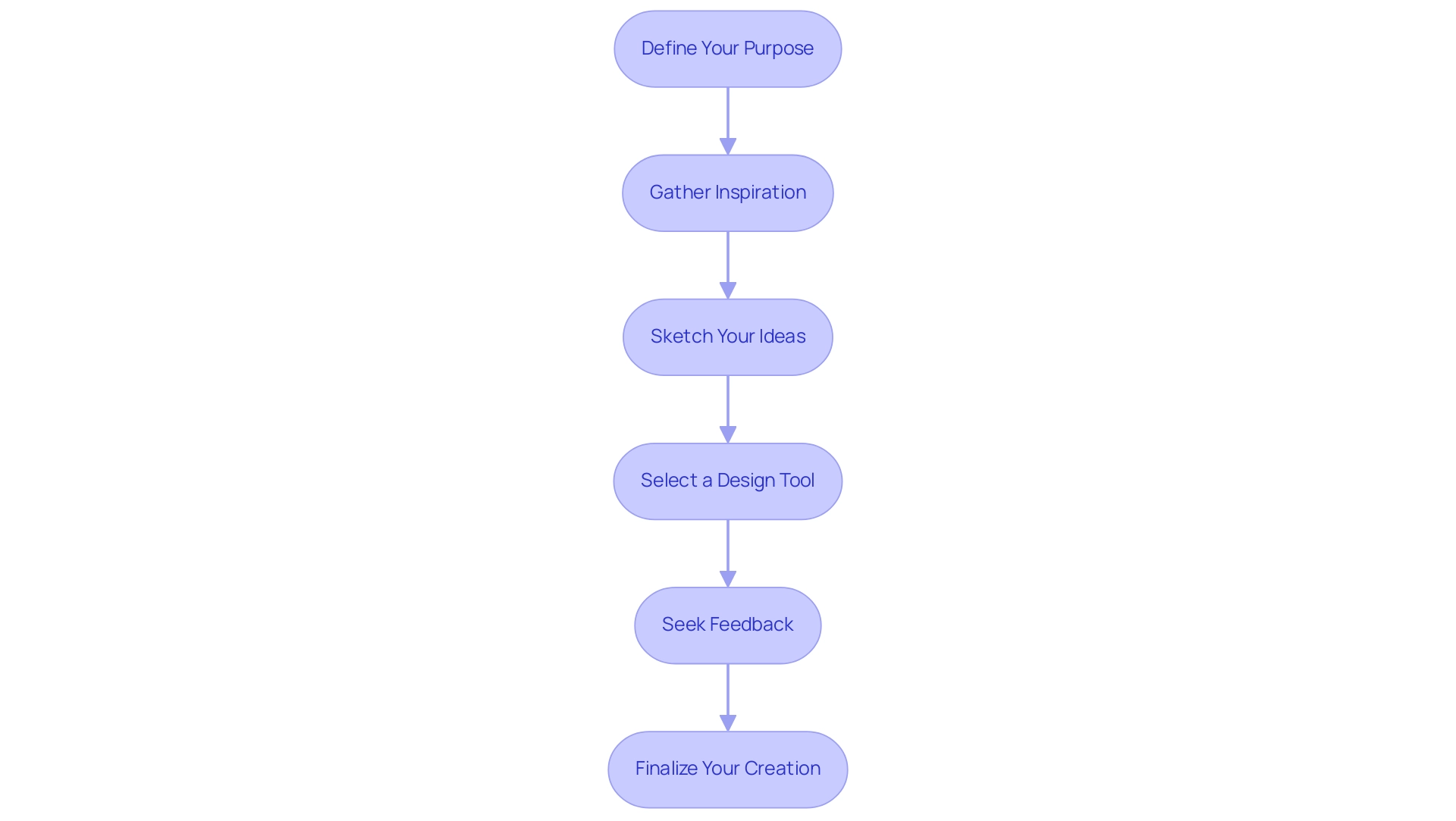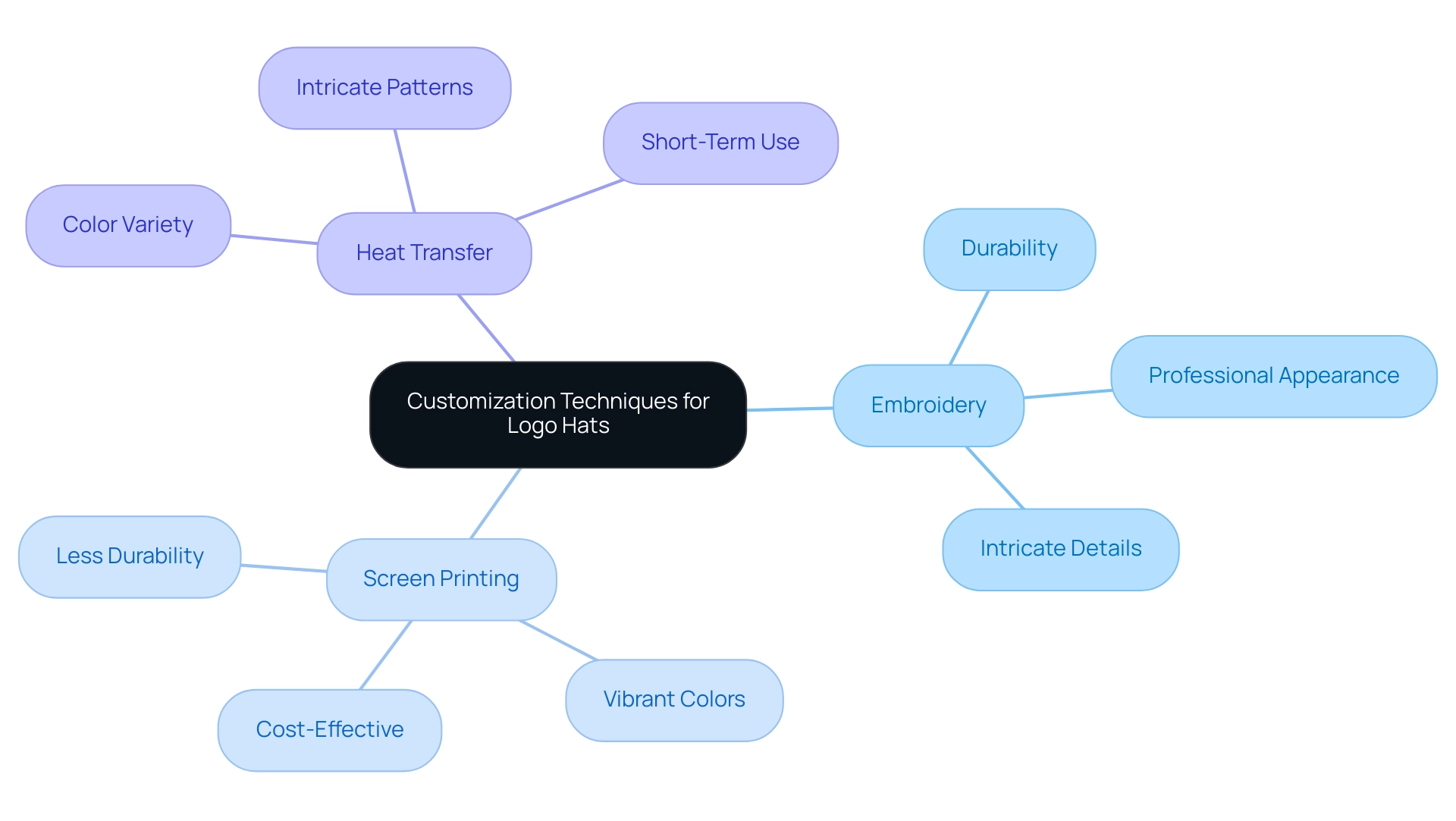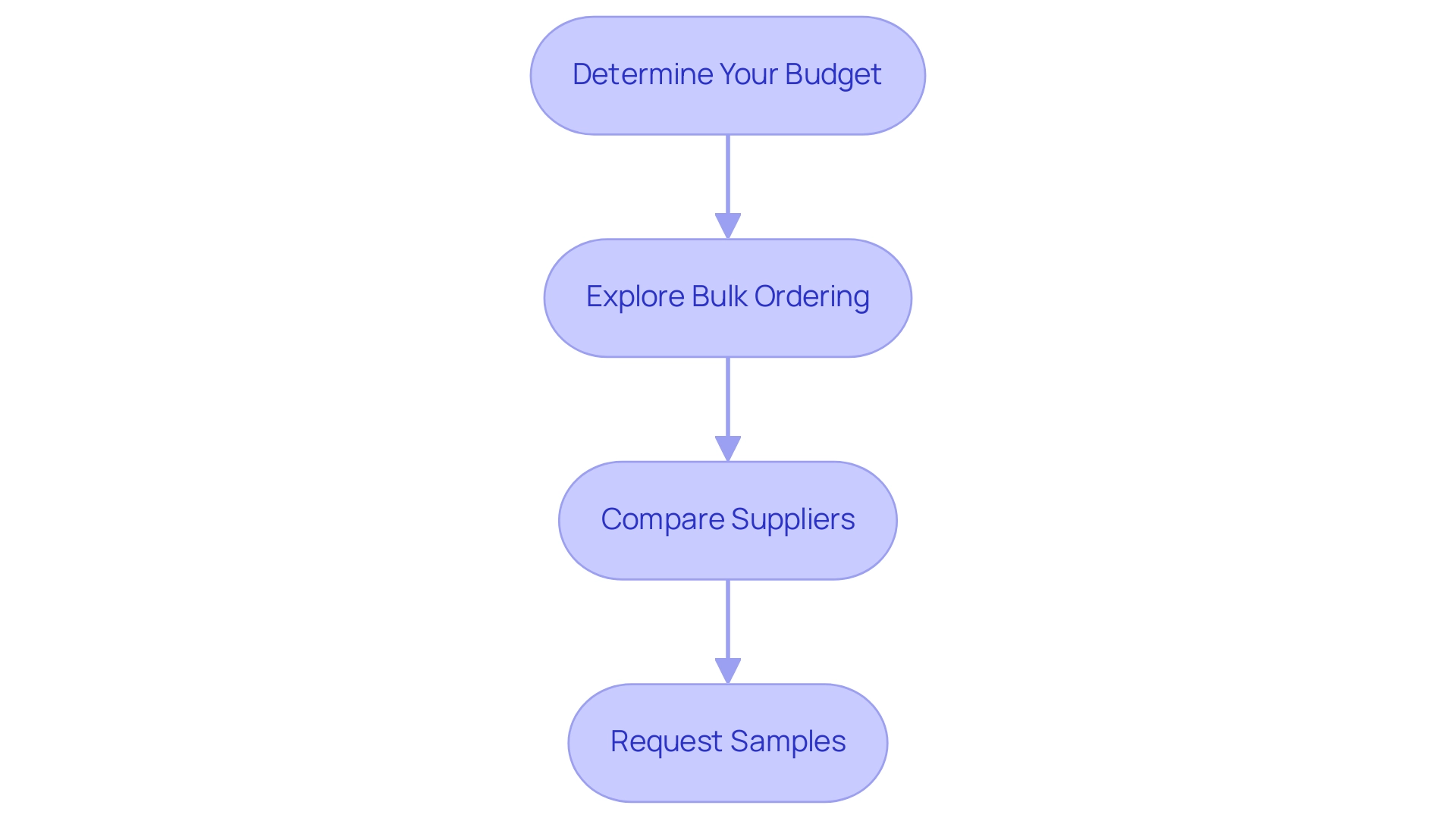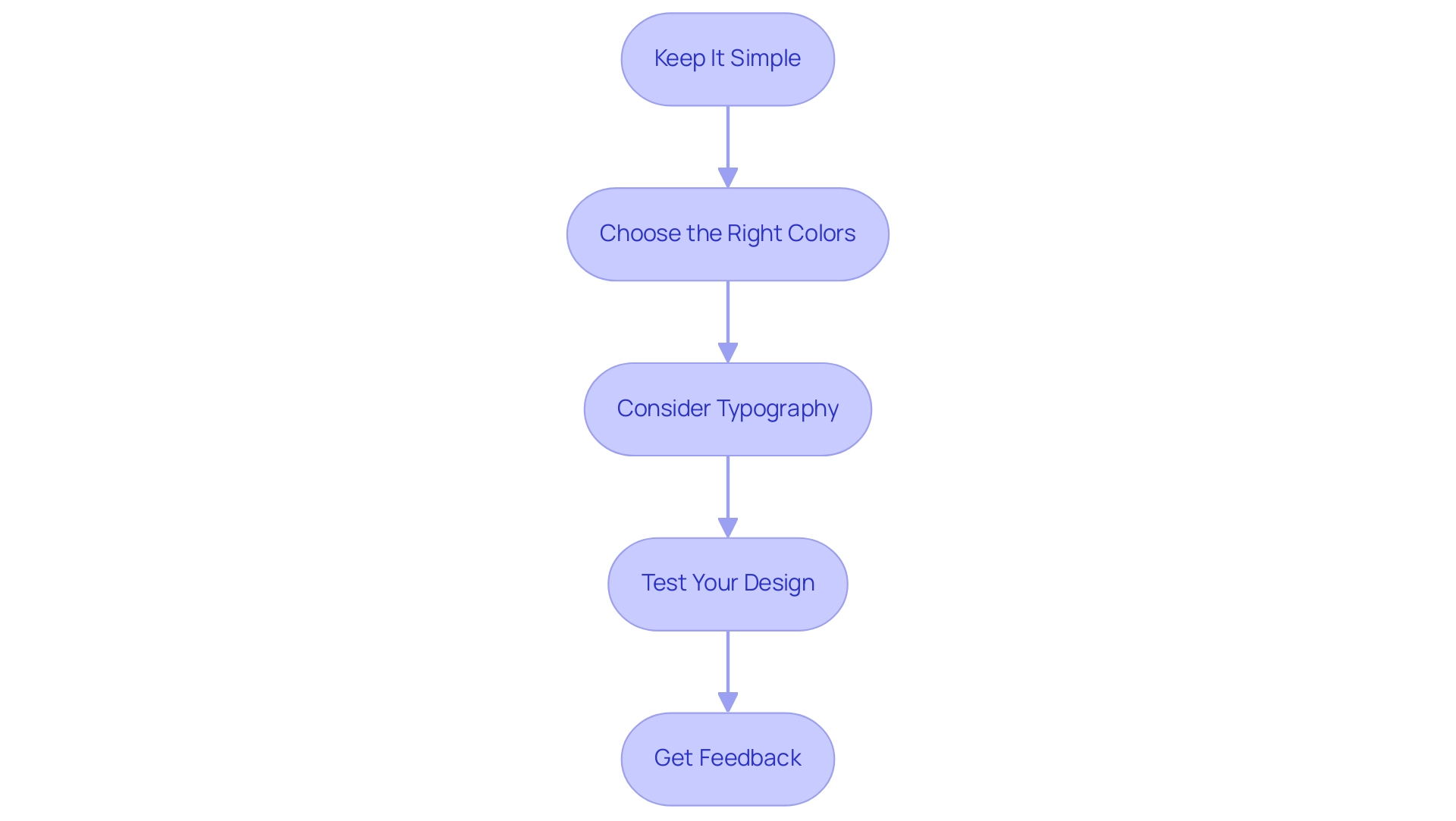Introduction
Creating a custom logo hat is more than just a fashion statement; it’s an opportunity to express identity, promote a brand, or commemorate a special event. As the popularity of personalized headwear continues to soar, understanding the ins and outs of designing a standout piece becomes essential.
From defining the purpose behind the hat to selecting the right materials and customization techniques, each step plays a critical role in ensuring the final product resonates with its intended audience. This guide delves into the step-by-step process of crafting a custom logo hat, exploring everything from design principles to pricing strategies, empowering creators to bring their unique vision to life.
Step-by-Step Process for Designing Your Custom Logo Hat
-
Define your purpose: Start by clarifying why you want to create a custom logo hat. Is it for a promotional event, to represent a team, or perhaps for personal use? This foundational question will not only guide your creative choices but also align the hat’s purpose with your brand's identity. As the fashion industry continues to grow, aligning your creation with current trends can enhance its appeal and effectiveness.
-
Gather Inspiration: Dive into the world of creativity by exploring various sources for inspiration. Browse online platforms like Pinterest or Instagram, visit local stores, or check out other successful campaigns. Pay attention to styles, colors, and logos that resonate with your brand or personal aesthetic. Remember, the right inspiration can spark creativity and lead to an exceptional creation. Significantly, innovative materials, like those created through the collaboration between MycoWorks and milliner Nick Fouquet, can also inspire unique creative elements.
-
Sketch Your Ideas: Start the creative process by sketching your emblem and hat concept. Don’t stress about making it perfect—this is about capturing your ideas. Let your imagination flow freely; rough sketches can often lead to the best concepts.
-
Select a Design Tool: Once you have a solid idea, it’s time to bring it to life digitally. Utilize graphic creation software or online platforms like Canva or Adobe Illustrator to create a polished version of your logo. These tools provide a variety of features that can assist you in experimenting with colors, fonts, and layouts, ensuring your creation stands out. As the market prioritizes premium products for better profitability, investing time in a quality appearance can pay off.
-
Seek Feedback: Share your creations with trusted friends or colleagues to gather constructive feedback. This step is crucial; fresh eyes can spot potential improvements and provide insights that you might have overlooked. Use this feedback to refine and enhance your creation further, keeping in mind the competitive landscape highlighted by the recent acquisition of Wear-A-Knit by Cap America, which emphasizes the importance of sourcing and production.
-
Finalize Your Creation: After incorporating feedback, make the necessary adjustments to your creation. Ensure it’s ready for production by confirming that all elements are clear and visually appealing. A well-executed creation, including protective coatings and precise cutting processes, is key to making a memorable impact, especially in today’s competitive market where the growth of the fashion industry is driving headwear market growth. Custom logo hats serve as effective branding tools, showcasing logos and artwork that resonate with your audience. Aligning your designs with these trends and optimizing them for the specific substrate will significantly enhance their effectiveness.

Choosing the Right Materials and Styles for Your Hat
When choosing materials for custom baseball caps, it's essential to consider several factors that not only enhance the product's appeal but also align with your identity:
-
Fabric Type: Popular materials such as cotton, polyester, and wool each offer unique comfort levels and durability metrics. For instance, cotton is breathable and soft, making it ideal for warm weather, while polyester provides durability and resistance to stretching, which is perfect for active wear. Additionally, innovative options like Reishi alt-leather, developed through the partnership between MycoWorks and LA-based milliner Nick Fouquet, are emerging in the market, offering sustainable alternatives that appeal to environmentally conscious consumers.
-
Hat Styles: Choose from a variety of styles, including baseball caps, snapbacks, and beanies. Each style caters to different preferences and demographics—baseball caps are often favored by sports enthusiasts, while beanies attract a younger, trendier audience. Understanding these distinctions can help tailor your marketing efforts more effectively. As the winter headwear market expands, propelled by rising awareness of fashion trends and shifts in environmental temperatures, acknowledging these preferences becomes essential in your strategy.
-
Color and Texture: Choosing colors that align with your brand can greatly influence consumer perception. Textured fabrics not only elevate the design but also create a tactile experience that can enhance engagement. As fashion experts suggest, a well-thought-out color palette combined with unique textures can set your hats apart in a competitive market. Furthermore, with the Asia Pacific region holding the largest market share in headwear, it's essential to consider regional consumer preferences when selecting colors and styles.
By carefully choosing materials and styles, you ensure that your custom logo hat is visually striking and functional. This strategic approach not only appeals to current fashion trends but also caters to the evolving preferences of your target audience, ultimately driving brand loyalty.

Exploring Customization Techniques: Embroidery vs. Printing
-
Embroidery: Imagine a design that stands the test of time—embroidery is your best bet. This technique involves stitching the logo directly onto the fabric of the custom logo hat, providing a polished and professional appearance. Not only does the custom logo hat deliver high durability—lasting as long as the hat itself—but it also shines with intricate details that really make your brand stand out. According to industry specialists, embroidery is especially appropriate for patterns that require longevity, making it a preferred choice for many brands.
-
Screen Printing: If you’re looking to create eye-catching visuals without breaking the bank, screen printing might be your go-to option. This method applies vibrant ink directly onto the surface of the hat, making it a cost-effective choice for large orders. However, keep in mind that while screen printing can handle intricate patterns, it may not provide the same durability as embroidery, as cracking can occur over time. Experts observe that screen printing is ideal for creating custom logo hats that emphasize color vibrancy over durability.
-
Heat Transfer: Want an explosion of color and creativity? Heat transfer could be the answer! This technique utilizes heat to transfer your artwork onto the hat, allowing for a wide palette of colors and intricate patterns. While a custom logo hat is perfect for intricate artwork, it may not match the durability of embroidery in the long run. Industry professionals suggest that heat transfer is ideal for short-term promotional items where vibrant color is essential.
As you weigh your options, consider your brand's message and budget. Each technique for creating a custom logo hat has its own strengths and weaknesses, especially regarding cost, durability, and suitability for complexity. Embroidery, although pricier, provides unparalleled durability, while screen printing and heat transfer offer economical alternatives for detailed and vibrant patterns. Choose the one that aligns best with your vision and needs.

Understanding Pricing and Ordering Options for Custom Hats
-
Determine Your Budget: Start by defining a clear budget for your custom headwear. This should encompass not only the base cost of the items themselves but also additional expenses such as shipping and design fees. Remember, as Sophie Brannon, Director of SEO for RushOrderTees, wisely notes,
A hat is not just a hat—it’s a statement of your personal style and needs.
Investing wisely here is essential to ensure your selected accessories reflect the statement you want to make. -
Explore Bulk Ordering: Many suppliers offer enticing discounts for bulk orders, so if you're considering a larger quantity, definitely ask about pricing tiers. For instance, ordering a total of 100 embroidered caps can significantly reduce your overall costs, as the price per unit typically drops. Additionally, be mindful of the color options available; suppliers often repeat color choices in their listings, which can affect your decision-making process and customization options.
-
Compare Suppliers: Take the time to research various suppliers and compare their prices, quality, and customization options. It’s crucial to read reviews to select a reputable provider who can deliver on your expectations, ensuring that your promotional products stand out. The Monterey Company, for example, concentrates on delivering a tailored customer experience via a committed design team that crafts custom headwear reflecting the uniqueness of each brand. This approach allows customers to obtain eye-catching statement pieces without exceeding their budget.
-
Request Samples: Before committing to a large order, requesting samples is a smart move. This allows you to assess the quality of the hats and the effectiveness of the customization firsthand.
By considering these factors, you'll be well-equipped to make informed decisions that align with your marketing objectives, ensuring your custom hats not only serve as promotional tools but also resonate with your target audience.

Designing an Effective Logo for Your Custom Hat
-
Keep It Simple: An emblem that resonates is often simple, making it more memorable and versatile. Consider legendary companies; their symbols are simple and easily identifiable, making them appear fantastic on a custom logo hat while maintaining their appeal.
-
Choose the Right Colors: Color selection is more than just aesthetics; it reflects your company's personality. For instance, warm colors can evoke feelings of excitement and warmth, while cooler shades can convey trust and calmness. Consider how these colors will work together to create a visually appealing palette that draws attention. Keep in mind, statistics indicate that 26% of women are more inclined to buy from companies with recognizable symbols, in contrast to 24% of men. This emphasizes the influence of color selections on recognition and purchasing behavior, making it essential to choose colors that connect with your target audience.
-
Consider Typography: Typography plays a crucial role in your logo's effectiveness. Opt for fonts that are not only legible but also align with your brand's voice. Too many fonts can confuse your message, so aim for harmony in your design.
-
Test Your Design: Before you finalize your emblem, put it to the test! Check how it looks in various sizes and against different backgrounds. This step is vital; an emblem should maintain its integrity whether it’s on a large billboard or a small baseball hat.
-
Get Feedback: Don’t shy away from sharing your design with trusted colleagues or friends. Their insights can be invaluable for making necessary tweaks and ensuring your brand stands out in a competitive market. By concentrating on these principles, you can create a design that not only enhances your custom logo hat but also powerfully embodies your brand.
The process starts with creating a digital graphic, which can be a logo, artwork, or any other image you want to print. This layout should be prepared using graphic creation software and optimized for the specific substrate and print requirements. As Ammara Mahmood, an Assistant Professor of Marketing, explores in her research on social media marketing and branding, effective branding through thoughtful design can leave a lasting impression, making your merchandise memorable. Additionally, consider the case study on promotional mugs, which demonstrates that strategic advertising solutions can be achieved through effective branding—showing that a well-crafted emblem is not just an aesthetic choice but a vital component of successful merchandise. Furthermore, remember that your logo can be applied not only to a custom logo hat but also to a variety of promotional items such as pens, keychains, phone cases, and USB drives, which will enhance your brand visibility across different products.

Conclusion
Creating a custom logo hat is a multifaceted journey that combines creativity, strategic thinking, and an understanding of your audience. By defining the purpose behind the hat, gathering inspiration, and sketching out ideas, the foundation is laid for a unique design that speaks to your brand's identity. Selecting the right materials and styles further enhances the appeal, ensuring the final product not only looks great but also resonates with your target demographic.
The choice of customization techniques—whether embroidery, screen printing, or heat transfer—plays a crucial role in the durability and visual impact of the design. Each option has its strengths, making it essential to align the technique with your brand message and budget. Moreover, understanding the pricing and ordering options enables informed decisions that maximize your investment, while a well-designed logo serves as a powerful branding tool, elevating your custom hat from mere accessory to a statement piece.
In the evolving landscape of fashion and branding, custom logo hats offer a unique opportunity to showcase individuality and promote brand recognition. By following the outlined steps and principles, creators can craft hats that not only fulfill their functional purpose but also leave a lasting impression on their audience. Embrace the process and let creativity shine, as a well-executed custom logo hat can become a beloved staple in the wardrobes of many.




